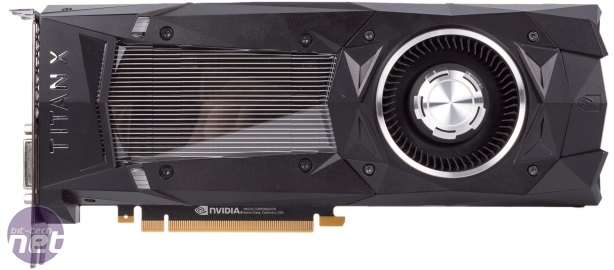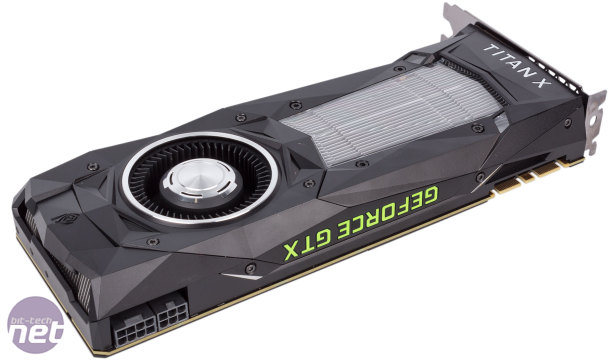
Performance Analysis
Using average frame rates to paint a general picture, the new Titan X emerges as 60 percent quicker than the closest competitor from AMD, the Fury X. This is roughly true of all three resolutions, although there is variation within the tests. Notably, the lead is 'only' 50 percent when focussing solely on the DX12 titles, but almost 70 percent in DX11 titles. Whichever way you look at it, there's now a staggering gap between the two top-end single GPU cards from the red and green teams.While the Titan X has 40 percent more cores, 50 percent more memory and significantly more memory bandwidth than a GTX 1080, its clock speed is lower and it is more limited by power and thermals, all of which eats into its advantage. Compared to the EVGA GTX 1080 FTW, which we'll take as a rough guide for overclocked GTX 1080s generally, the Titan X at stock speeds is 17 percent faster at 1080p, 21 percent quicker at 1440p and 24 percent more potent at 4K. It's unsurprising to see a climb like this, as with a card this powerful the CPU becomes a limiting factor at 1080p and even at 1440p. Most obviously, this is felt in Total War: Warhammer where the difference in average frame rate at 1080p is a mere 7 percent, but rises to 33 percent at 4K. Also, in the Unigine 1080p benchmark there's actually no tangible difference between this and the GTX 1080 FTW, suggesting that the rendering there is almost entirely limited by the CPU.
An important point of comparison is the Maxwell GTX Titan X. We only have 1440p and 4K figures here, but even so we see that the new card is able to beat its predecessor by almost 60 percent overall, and this is a huge jump for a single generation. It's slightly faster in the DX12 titles, showing that Nvidia has made some progress here, and it offers enough extra performance to perhaps tempt previous generation Titan X users to upgrade to the newest model, which is quite the feat.
Examining the all-important minimum frame rates shows that the Titan X is capable of sustained 60fps play at maximum settings at 1080p. The same is also nearly true of 1440p, but not quite: in The Division we hit a minimum of 55fps, although we do think there's a CPU limitation in play here – generally it's safe to expect 60fps or more at this resolution as well. At 4K, meanwhile, minimums are typically in between 30 and 60fps, and it's a largely smooth experience, although again The Division challenges this and we get a minimum of 25fps – still borderline playable. This frame rate range makes the Titan X absolutely ripe for pairing with a 4K G-Sync screen.
Power consumption is course high compared to the rest of the Pascal family, but the fact that we're running an overclocked, eight-core system with a GPU pumping out frame rates that often average to over 60fps at 4K, a full system power consumption of less than 450W is pretty admirable – there are a number of SFX PSUs that can handle this with ease. Somewhat embarrassingly for AMD, the Titan X actually consumes less than the R9 Fury X all while being so much faster.
The temperature is as expected, with the card hitting its thermal limit of around 80°C, giving us a delta T value of 60°C on a relatively warm day. In the stress test, the fan peaked at 51 percent, or just under 2,500 RPM, at which point it is easy to hear, although not intrusive.
As mentioned, the card is regularly limited by both the power and temperature limits, and this is evident from the constant boost clock speed variation. In our well ventilated system, the Titan X peaked at 1,797MHz, but was never able to sustain such a speed, instead fluctuating between roughly 1,500MHz and 1,700MHz as GPU Boost 3.0 did its thing and tried to keep the balance.
With the 14 percent base clock increase and 10 percent memory speed boost, we were expecting some nice overclocked figures, and the Titan X didn't disappoint. While the 1440p Unigine benchmark went up by only 9 percent, a couple of games tested at 4K saw leaps of between 13 and 22 percent. This is more than the overclock alone accounts for; it's also to do with the increased thermal and power headroom allowing the Titan X to enter full beast mode. With these settings, the actual boost clock was consistently higher with much less variation, mostly between 1,898MHz and 1,936MHz. Further evidence came from the 50W increase in peak system power consumption, and the GPU was also 4°C warmer. That doesn't seem like a lot, but the cooler also had to try much harder to keep it that way, with the fan hitting 72 percent (about 3,500 RPM) and really being too loud for day-to-day use in our opinion.
In short, the Titan X has even more performance in store than it lets on, but to really get the most from it you'll want to water-cool it. Good thing we have an article coming on doing exactly that within a week or so.

MSI MPG Velox 100R Chassis Review
October 14 2021 | 15:04












Want to comment? Please log in.